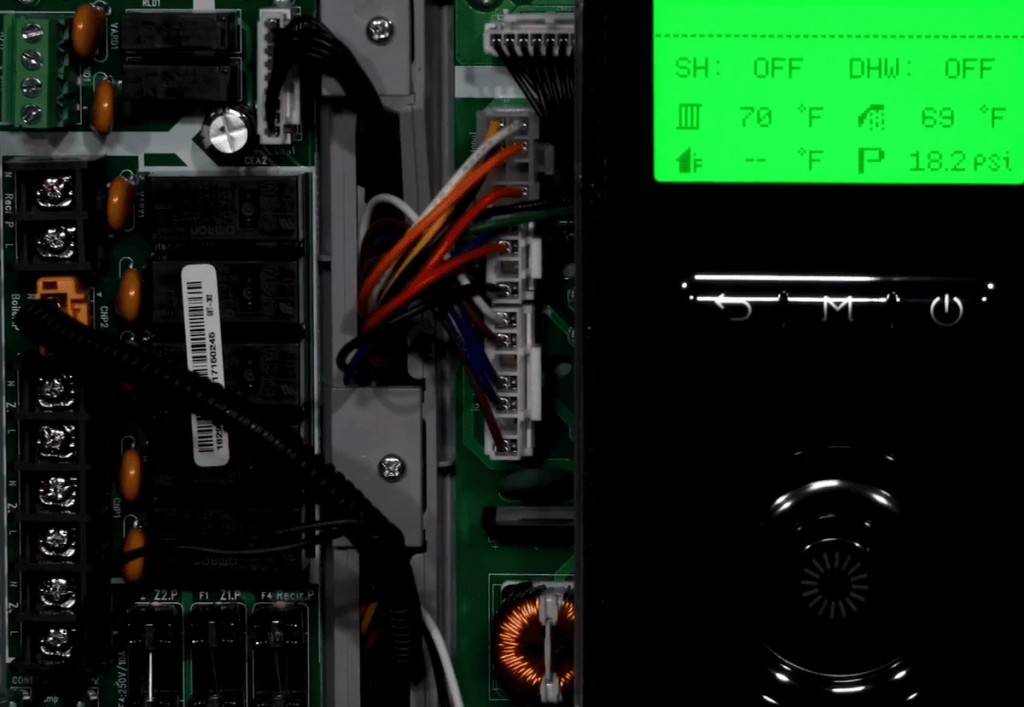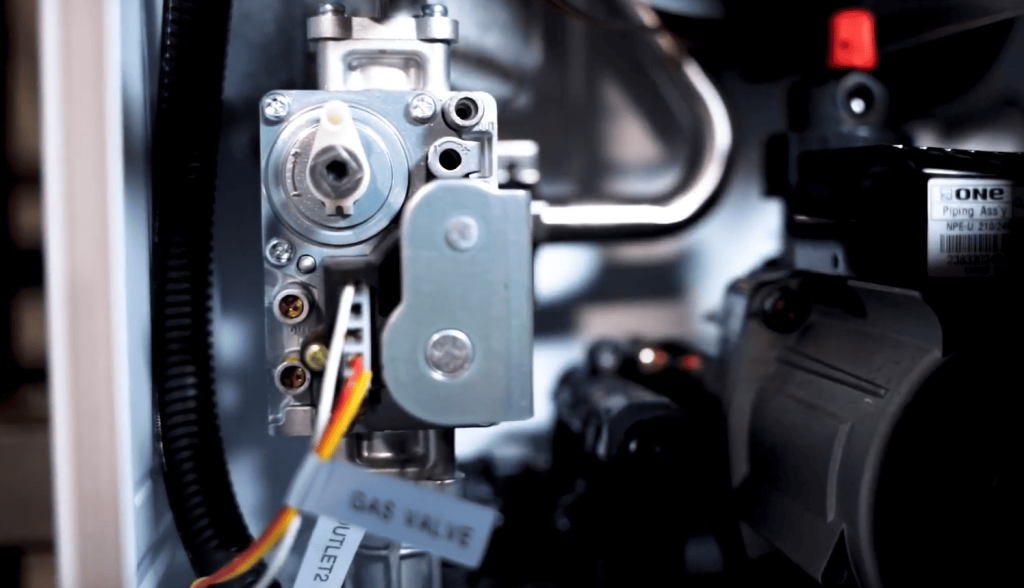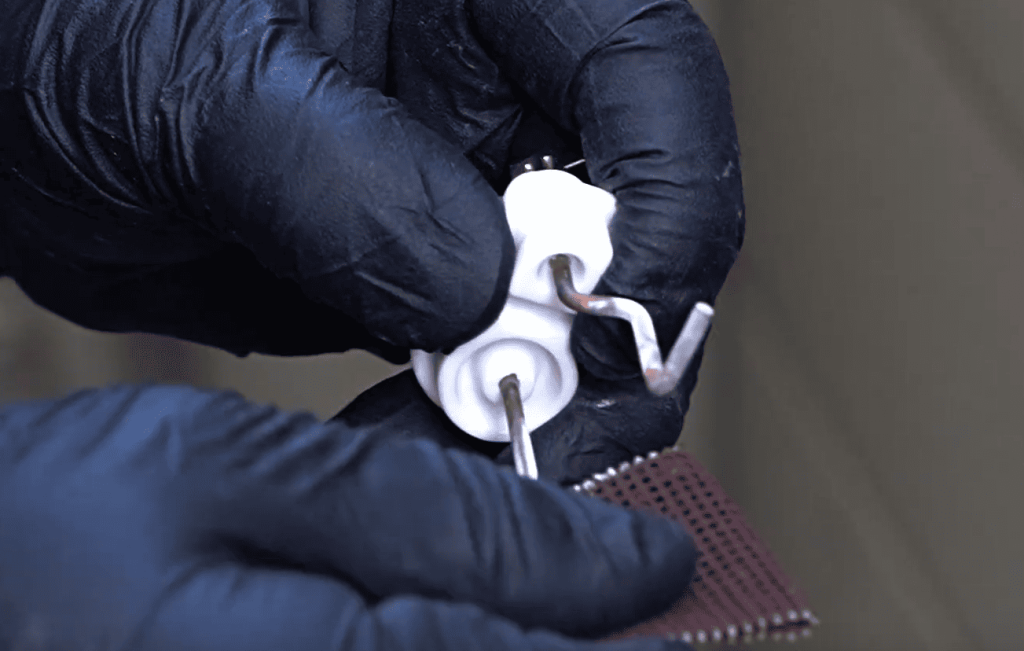Did you know ignition failures account for nearly 20% of all tankless water heater malfunctions? When your system suddenly stops delivering hot water, it’s more than an inconvenience—it disrupts daily routines and comfort. This guide walks you through resolving a common ignition-related challenge efficiently and safely.
We’ll focus on a specific scenario many homeowners face: a gas-powered unit showing signs of ignition trouble. You’ll learn how to systematically check fuel connections, inspect critical components, and identify airflow restrictions. Our approach prioritizes safety while empowering you to tackle solvable issues without immediate professional help.
Most cases involve simple fixes like clearing vent blockages or resetting sensors. However, we’ll also clarify when to contact certified technicians—especially if gas lines or electrical systems need attention. By understanding these steps, you’ll restore your home’s hot water supply faster while protecting your appliance’s warranty.
Key Takeaways
- Ignition failures often link to gas supply issues or blocked vents
- Basic checks take under 30 minutes with proper guidance
- Sensor cleaning resolves many false error alerts
- Always shut off gas valves before inspections
- Professional help recommended for electrical components
Understanding Navien Error Code 003
A cold shower can be more than just uncomfortable—it might signal underlying issues with your home’s heating system. Let’s explore what triggers specific operational alerts and how to address them effectively.

Decoding the Ignition Alert
When your unit displays a three-digit sequence, it’s signaling an ignition system malfunction. This means the burner isn’t lighting properly to heat water. The system automatically shuts down to prevent safety risks from unburned gas.
Primary Triggers for Ignition Disruptions
Four factors commonly interfere with proper burner activation:
| Issue | Impact | Solution |
|---|---|---|
| Low gas pressure | Inadequate fuel for ignition | Check supply valves & meter |
| Dirty igniter | Weak spark generation | Clean with dry cloth |
| Faulty flame sensor | False “no flame” detection | Test with multimeter |
| Vent blockages | Oxygen-starved combustion | Clear debris from exhaust |
Environmental factors like dust accumulation or humidity often worsen these issues over time. Regular maintenance helps prevent 83% of ignition-related shutdowns according to HVAC industry reports.
Essential Troubleshooting Steps
Your morning routine shouldn’t start with cold water surprises. Let’s walk through practical checks to restore your heater’s function safely and efficiently.
Performing Initial Diagnostic Checks
Always start with safety. Turn off the unit’s power at the breaker and confirm proper ventilation. Gas appliances require airflow to prevent hazardous buildup.
Next, locate the supply valve connected to your heater. Ensure it’s fully open—a partially closed valve mimics low fuel pressure. Listen for hissing sounds that indicate active gas flow.
Inspecting Ignition Components and Sensors
Remove the access panel carefully. Examine the igniter and flame rod for cracks or discoloration. Use a soft brush to clear dust from sensors—rough handling can bend delicate parts.
Check electrical connections for tightness. Loose wires disrupt communication between components. If you spot greenish corrosion, a technician should assess potential damage.
Finally, scan the vent pipe for nests or debris. Even small obstructions starve the combustion chamber of oxygen. Clear any blockages with a flashlight and flexible brush.
Document your findings with photos or notes. This record helps professionals diagnose complex issues faster if basic fixes don’t resolve the alert.
Checking Gas Supply and Component Integrity
Your tankless water heater’s performance lives and dies by its fuel delivery. Like checking your car’s gas gauge before a road trip, verifying proper gas flow ensures your system can fire up when needed.
Verifying Gas Flow and Pressure
Start at the source. Locate the main shut-off valve near your unit—it should parallel the gas pipe when fully open. A perpendicular position means it’s closed. Listen for steady hissing sounds indicating active flow.
Inspect visible connections using a flashlight. Look for white corrosion spots or black soot marks near joints. Tighten any loose fittings with an adjustable wrench, but avoid over-tightening brass components.
Notice weak flames or delayed ignition? These often signal low pressure. Compare performance across gas appliances—if all stovetop burners struggle, contact your utility provider immediately. Never adjust gas lines yourself; this requires certified technicians.

Use this quick checklist for safety:
- Sniff for rotten egg odors indicating leaks
- Keep flammable materials 3 feet from the unit
- Install carbon monoxide detectors nearby
Most gas supply issues resolve with simple valve adjustments or professional pressure calibration. Document your observations—this helps technicians diagnose complex problems faster if basic fixes don’t stick.
Preventive Maintenance for Navien Tankless Water Heaters
Consistent care keeps your home’s hot water flowing smoothly. Proper upkeep reduces repair needs by 40% according to plumbing experts. Establish a maintenance routine to protect your investment and avoid unexpected cold showers.
Smart Cleaning Habits
Start with the air intake filter. Check it every six months for dust buildup. Gently vacuum or rinse it under cool water if clogged. Let it dry completely before reinstalling.
Inspect exhaust pipes annually. Look for bird nests, leaves, or ice dams blocking airflow. Use a flashlight to check interior walls for corrosion. Tighten loose brackets with a screwdriver if needed.
Long-Term Protection Strategies
Flush your system twice yearly to fight mineral deposits. Mix white vinegar with water for descaling. Circulate the solution through the heat exchanger for 45 minutes using a submersible pump.
Clean burners and sensors every 12 months. Wipe surfaces with a microfiber cloth—avoid abrasive scrubbers. Check wire connections for fraying or green spots. Tighten any loose terminals with an insulated screwdriver.
Mark maintenance dates on your calendar. Pair checks with daylight saving time changes for easy remembering. This simple habit helps catch small issues before they become expensive repairs.
When to Seek Professional Help
Have you tried every fix but still face cold showers? Some heating system challenges require specialized skills. Knowing when to call experts protects your home and prevents costly mistakes.
Signs You Need a Certified Technician
Gas odors or hissing sounds demand immediate action. These often indicate leaks needing urgent repair. Turn off the main valve and evacuate before contacting professionals.
Multiple failed troubleshooting attempts signal deeper issues. If cleaning sensors and checking vents didn’t resolve the problem, technicians have tools to diagnose hidden failures. Electrical sparks or flickering lights near your unit also warrant expert attention.
What to Expect During a Service Call
Technicians start with a complete system check. They’ll test gas pressure, inspect wiring, and measure airflow using specialized meters. This methodical approach pinpoints the root cause efficiently.
You’ll receive clear explanations of any issues found. Repairs might involve replacing worn parts or adjusting combustion settings. Most pros complete the work in one visit, restoring hot water quickly.
Remember: Licensed experts carry liability insurance and follow strict safety protocols. Their knowledge ensures repairs meet manufacturer standards, keeping your warranty valid.
navien error code 003: Causes, Repair, and Guidance
What does your heater’s blinking signal really mean? Different models communicate operational hiccups in unique ways. Let’s break down how to interpret these alerts accurately.
Decoding System Alerts
Your unit’s display might show slightly different messages for the same underlying issue. Consider these scenarios technicians frequently encounter:
| When Alert Occurs | Likely Culprit | Quick Check |
|---|---|---|
| During startup | Flame sensor malfunction | Test electrical continuity |
| After long use | Overheated components | Feel exterior surfaces |
| Cold weather | Condensation freeze | Inspect drain lines |
“The same numerical alert can mean different things based on operating conditions,” notes HVAC specialist Mark Tilden. Track patterns in your unit’s behavior—morning vs. evening use, or seasonal temperature changes.
Common Repair Solutions
Technicians often find these fixes resolve persistent alerts:
Flame rod replacement tops the list. Corroded sensors misread burner activity, causing unnecessary shutdowns. A Maryland family restored their hot water by swapping a $25 part after documenting error frequency.
Gas valve adjustments solve 40% of cold-weather cases. Low pressure settings prevent proper ignition when temperatures drop. Always let professionals handle gas line modifications for safety.

Keep a symptom journal if alerts recur. Note:
- Time of day when issues start
- Recent weather changes
- Unusual sounds before shutdowns
This data helps service teams diagnose faster, potentially saving diagnostic fees. Most units need annual professional maintenance to prevent 72% of repeat alerts according to plumbing industry reports.
Conclusion
Resolving heating system challenges becomes straightforward when you combine practical knowledge with methodical checks. This guide has equipped you with strategies to address common ignition interruptions in tankless water heaters, focusing on safety-first diagnostics and smart maintenance habits.
Always begin with simple solutions—verify gas flow, clear vent obstructions, and clean sensors. These basic steps resolve most operational alerts without specialized tools. For persistent hot water issues or gas-related concerns, licensed technicians offer expertise that protects both your home and appliance warranty.
Regular care remains your best defense against unexpected shutdowns. Schedule biannual inspections and descaling sessions to keep your system running smoothly for years. Pair these routines with prompt attention to minor irregularities, and you’ll enjoy reliable performance from your water heater through every season.

